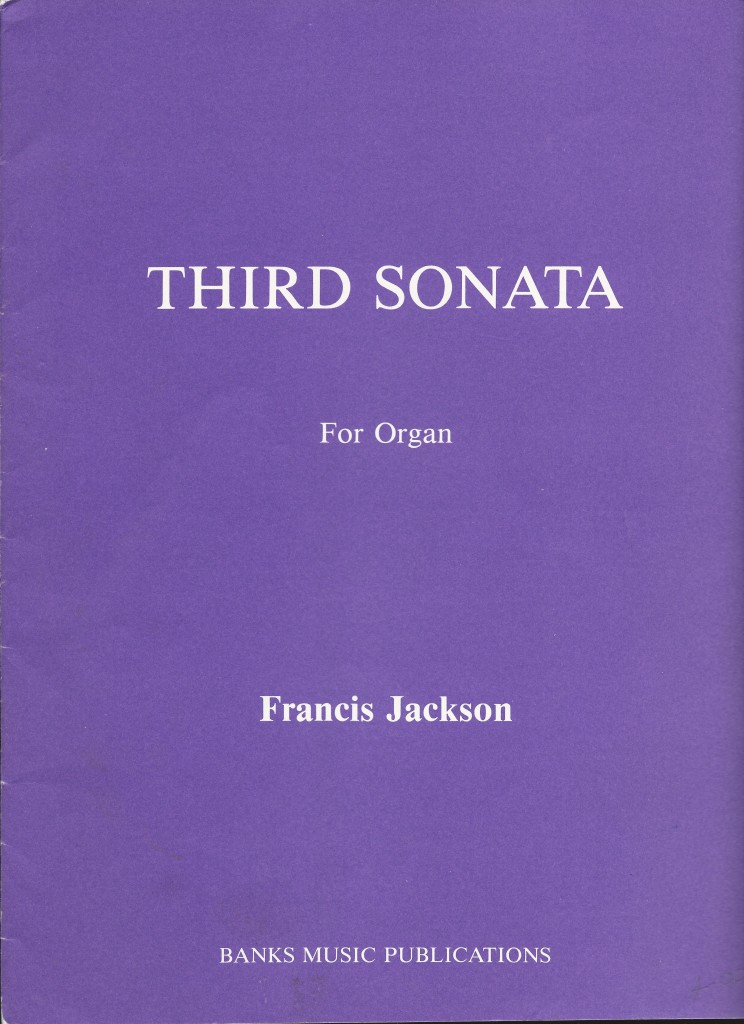
I don’t think I mentioned that the prelude and postlude went well Sunday. I’m thinking of looking at the entire third Organ sonata by Francis Jackson from which I drew the slow movement (the Andante below) as the prelude.
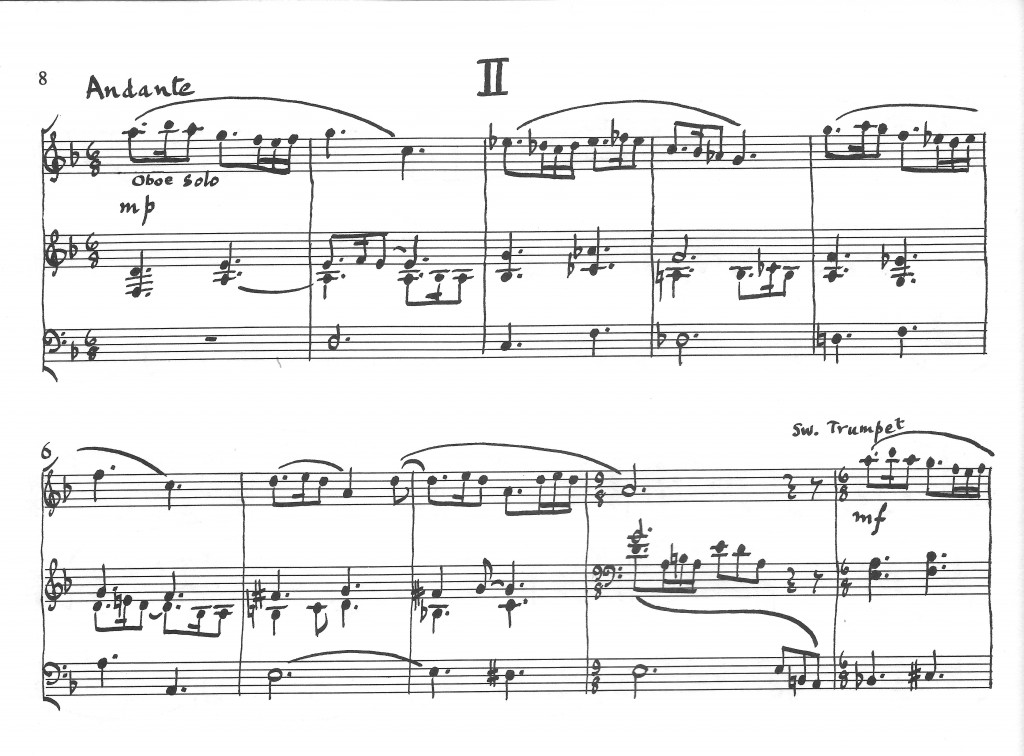
I like his combination of spicy little harmonies with lyricism in it. Not sure if I’m going to have the time and energy to work on it soon.
Since I’m already planning to play Buxtehude’s Praeludium in F major, BuxWV 145 and Andrea Gabrielli’s Ricercar Arioso (IV) this Sunday as prelude and postlude respectively, I went ahead and chose organ music for the following Sunday. This puts me ahead a week. I’m thinking I could learn some harder music if I gave myself a minimum of two weeks for each Sunday. Of course some pieces will be longer projects.
Yesterday I scheduled Introduction, Theme and Variation One from “Variations on a Hymn Tune” Op.20 by William Mathias for the prelude. The nomenclature is my own. He doesn’t really call the beginning of this piece the “introduction.” But that’s what it is. I like to be clear as possible to listeners who notice the music citations in the bulletin.
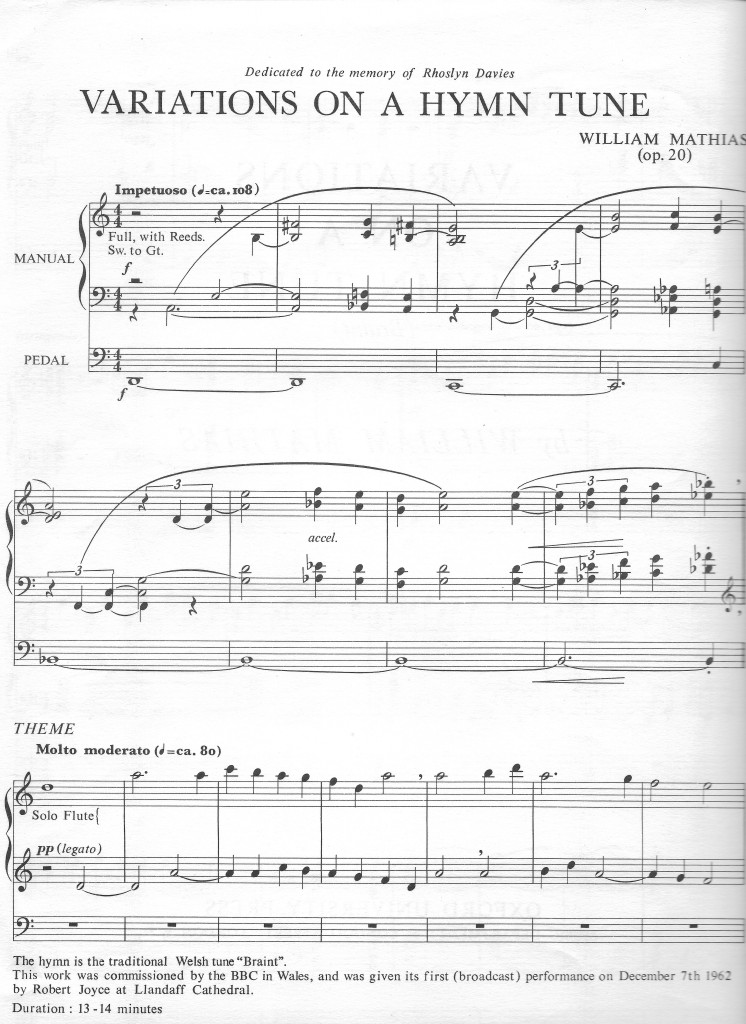
I am very partial to William Mathias. Again he uses spicey harmonies and is in the same vein as Francis Jackson. But Mathias has a unique flavor all his own. I once heard an Anglican musician I knew in Detroit talk about interviewing Mathias before he died. The interviewer told me that he wasn’t sure that Mathias was living on this planet or something like that. Whatever he said gave Mathias an otherworldly feeling as a person that matches his lively and eccentric music.
For the postlude I scheduled Toccata pour Grand Orgue (1912) by Gaston Bélier.
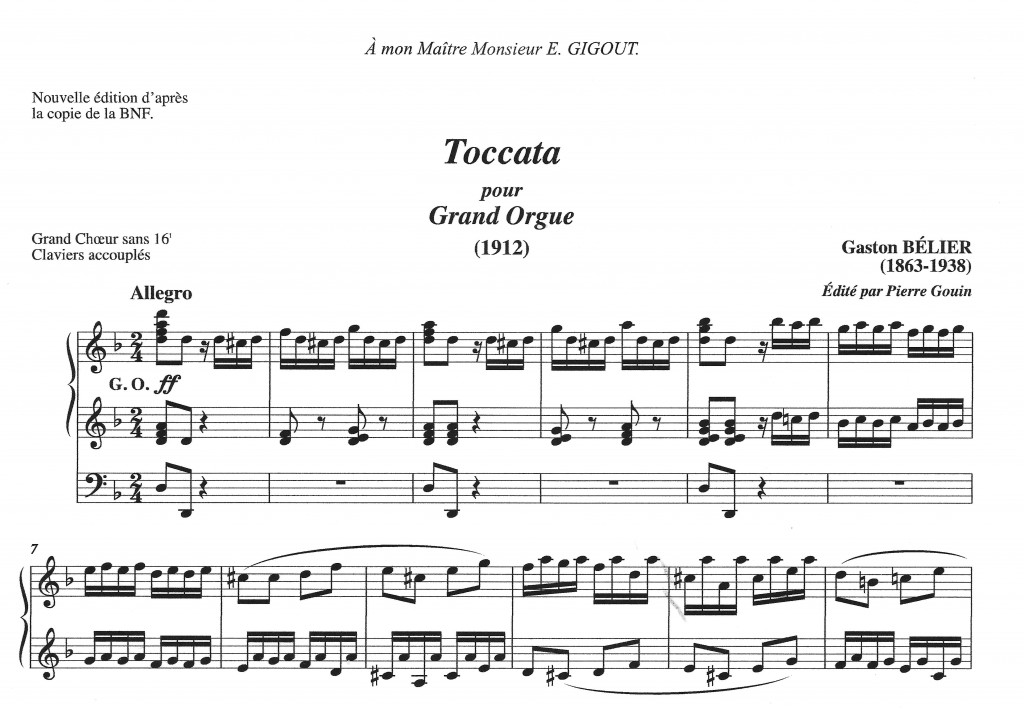
I found this piece by searching “toccata” on the ISMLP site. He was a pupil of Gigout. The French wikipedia article indicates a couple other composers who like him are basically known for one toccata, Albert Renaud and Marcel Lanquetuit.
Renaud’s is also copyright free and on ISMLP:
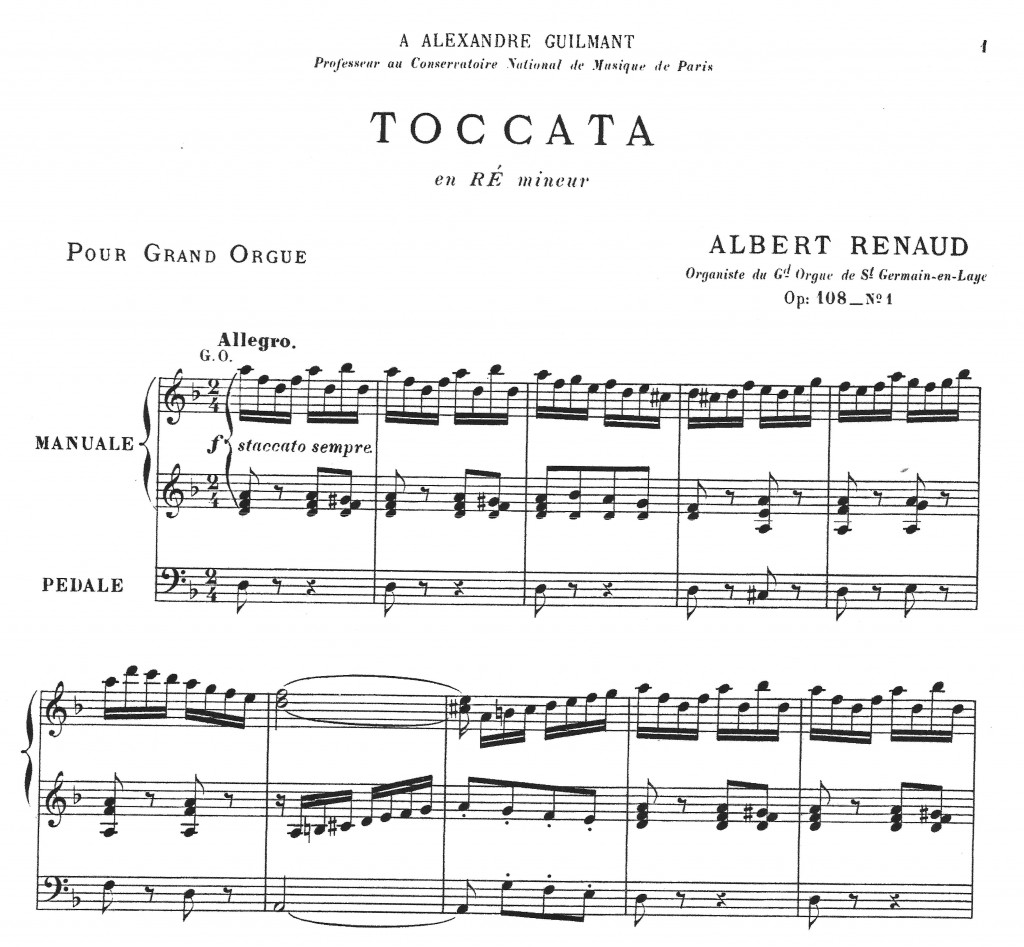
His is dedicated to Guilmant. Marcel Lanquetuit’s toccata is not on ISMLP. I figure this is because he lived well into the 20th century and somebody still holds copyrights on it. Again the French Wikipedia indicates that his Toccata in D major was published in 1927. He died in 1985.
It’s kind of a gas to find three composers I’ve never heard of. I played through Belier yesterday before scheduling it. It’s fluffy but satisfactorily flashy.
I feel like as I kick off the choir season it might be a good idea to play a few of these flashy pieces for postludes.
At this point I’m bracing myself for no shows at the rehearsals tomorrow evening. I scheduled the rehearsals because the boss wanted the choirs to sing on Kick Off Sunday (that would be this coming Sunday).
I didn’t do enough (any?) follow-up to my recruitment letters except to talk with several people Sunday who basically told me “no thanks.”
My obstinate commitment to quality music in worship persists. Fuck the duck. I will begin teaching my choir the Bach cantata movement I want to sing on October 7th this Wednesday. I have some excellent music planned. I only hope I can pull some of it off with whoever bothers to volunteer for choir (and come to the reinstated Wednesday rehearsal). If it looks shaky I have plans B, C, D, and on.
Whatever shrug.
********************************************************************
Mexico City’s Aztec Past Keeps Emerging in the Present – NYTimes.com
Mexico City fascinates me. It’s a huge city and it sits on important archaeological treasures.
*********************************************************************
Reagan’s Personal Spying Machine – NYTimes.com
I remember many negative things about Reagan’s regime (Hello, Olly North!), but this writer points out the irony of Republicans ready to gut entitlements who worship at the Reagan altar. Unfortunately Reagan did not hesitate to accept government assistance. This from the man who brought the USA the false idea of the Welfare Queen.
*********************************************************************
Scaring the Voters in the Middle – NYTimes.com
Kristoff names off some important facts about rape and birth control in America.
**********************************************************************
Aug. 27: Michigan Isn’t a Tossup – NYTimes.com
Thank you to nephew, Ben Jenkins, for linking this interesting take on polls.
***********************************************************************
Ricky Gervais: Is There a Difference Between British and American Humor | TIME Ideas | TIME.com
And thank you to daughter, Sarah Jenkins, for putting this link up on Facebook.
*********************************************************************


